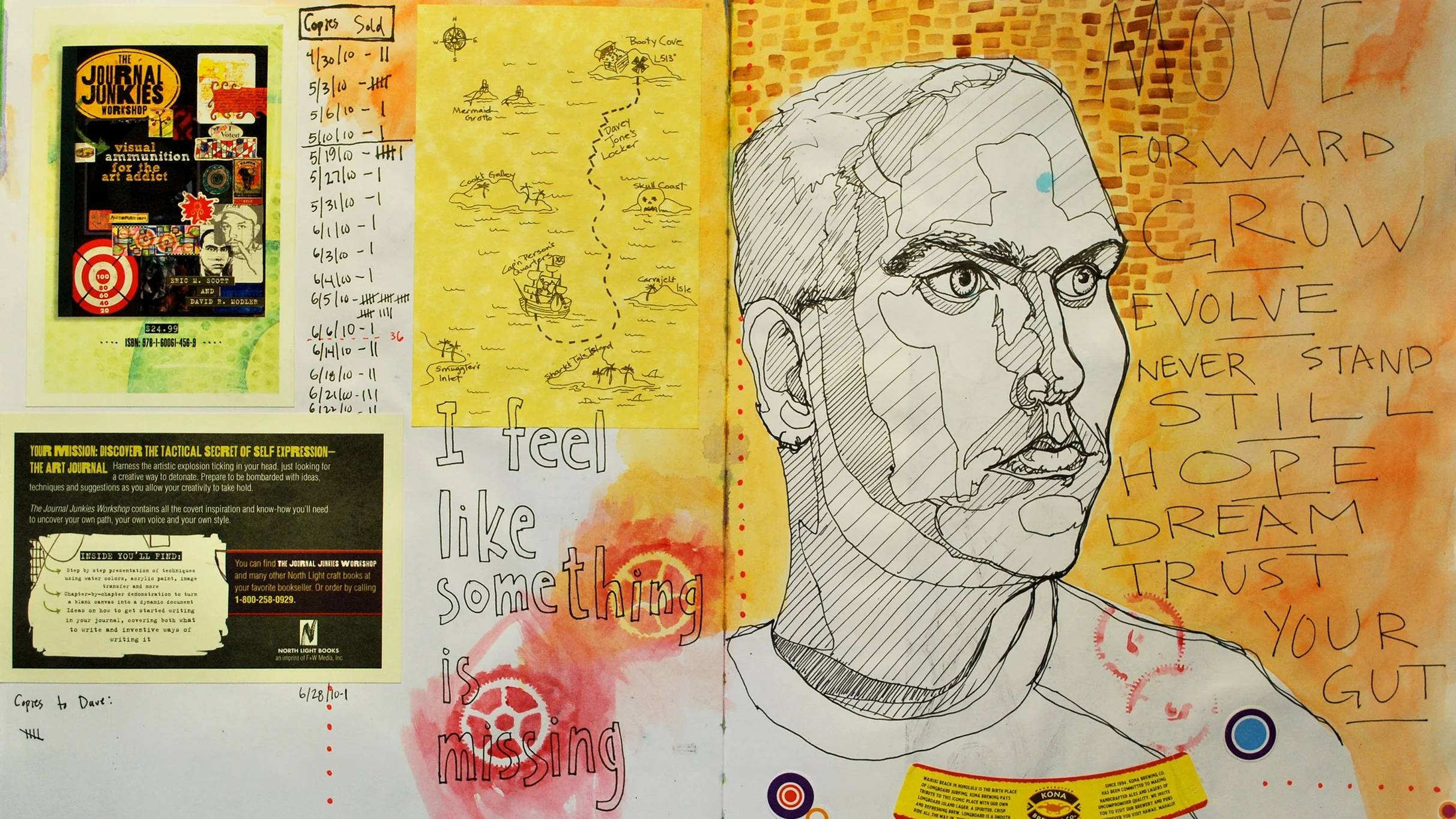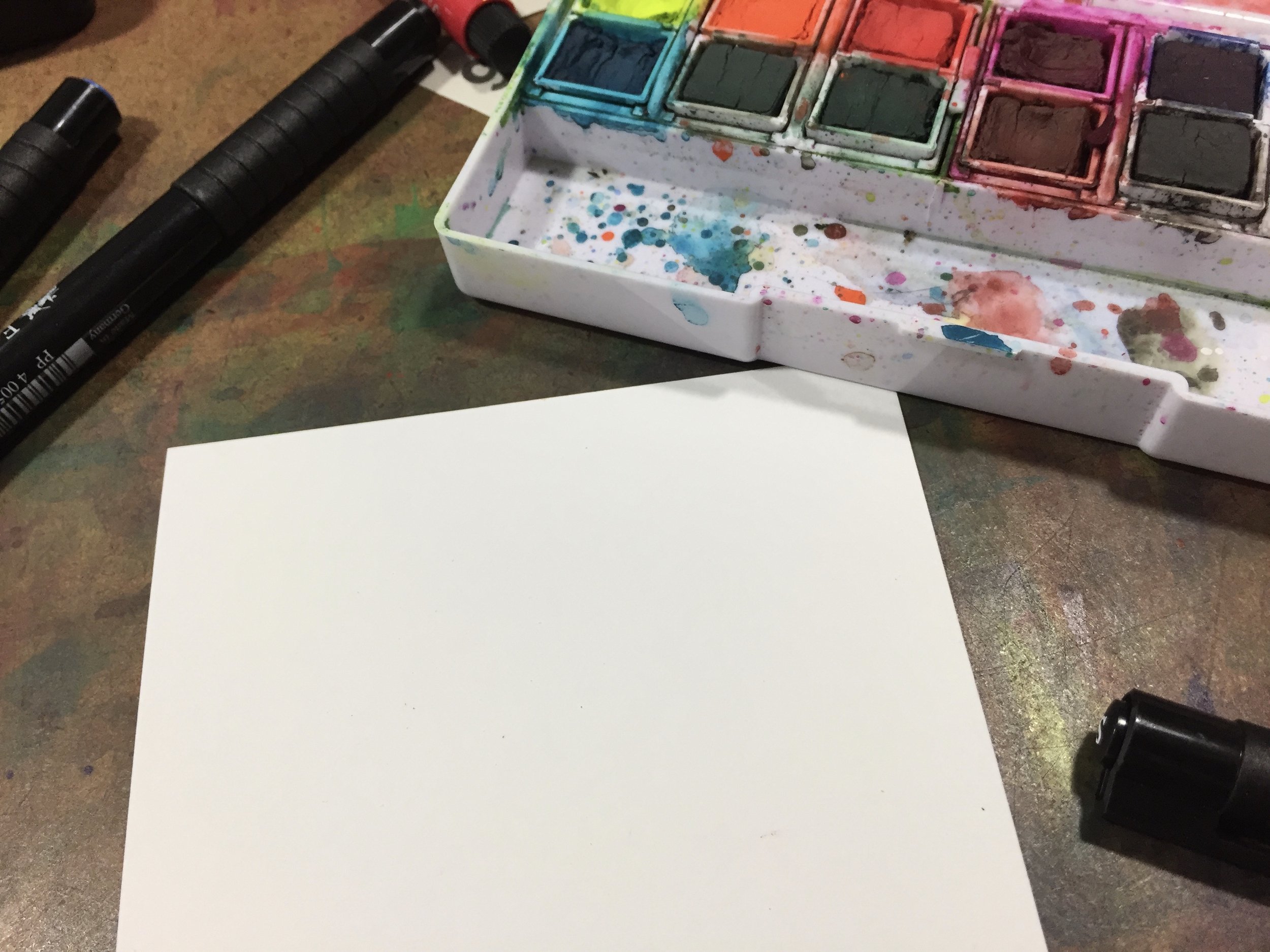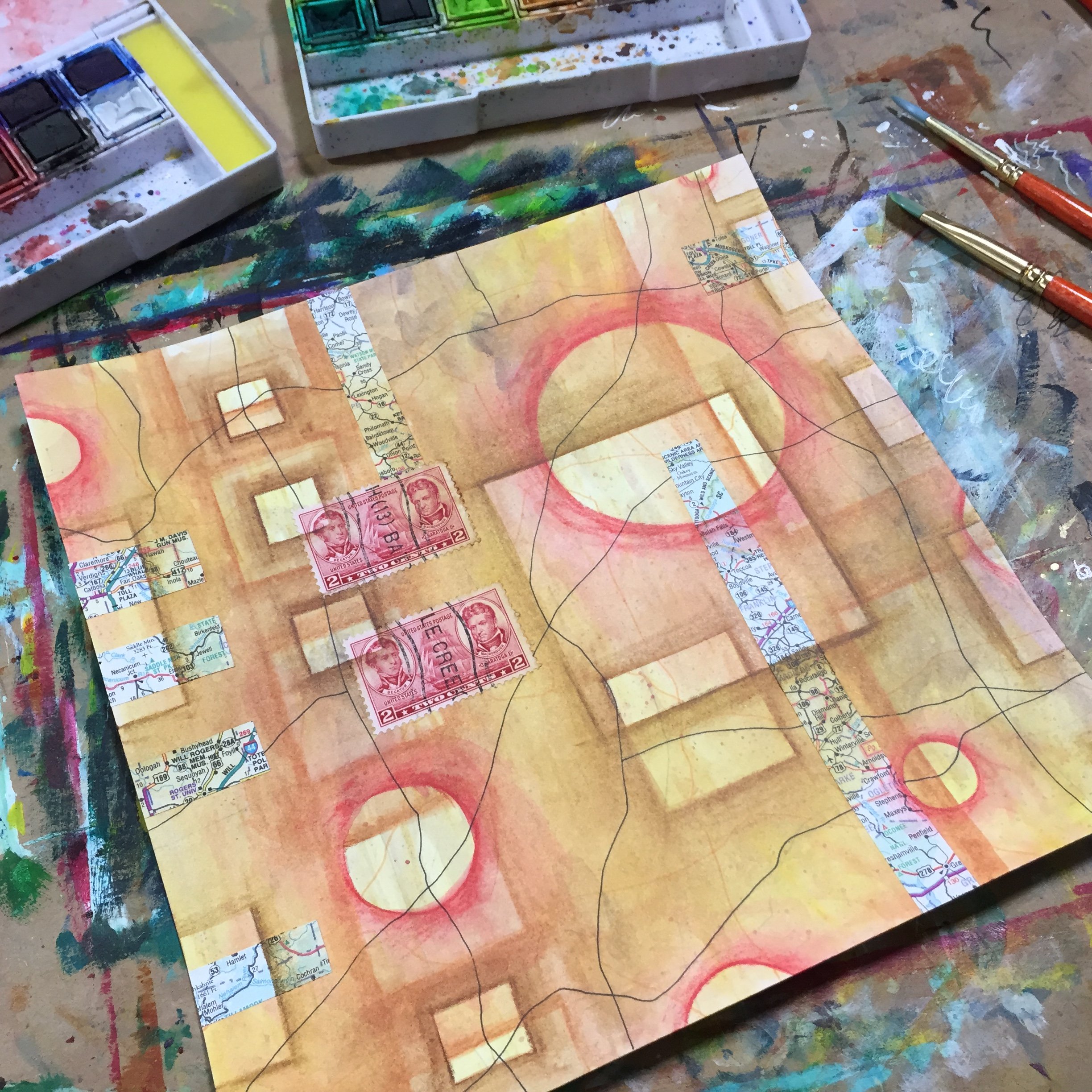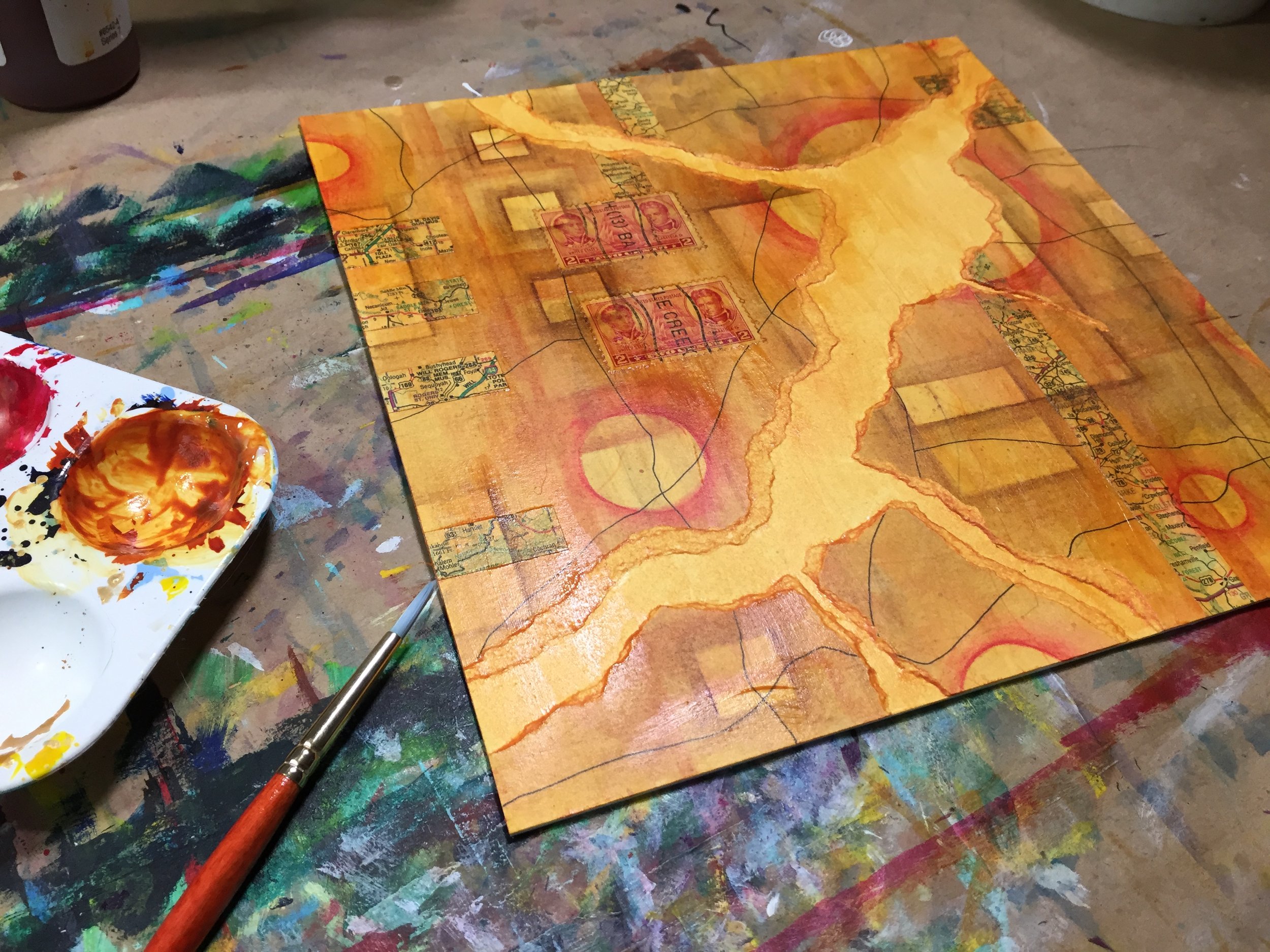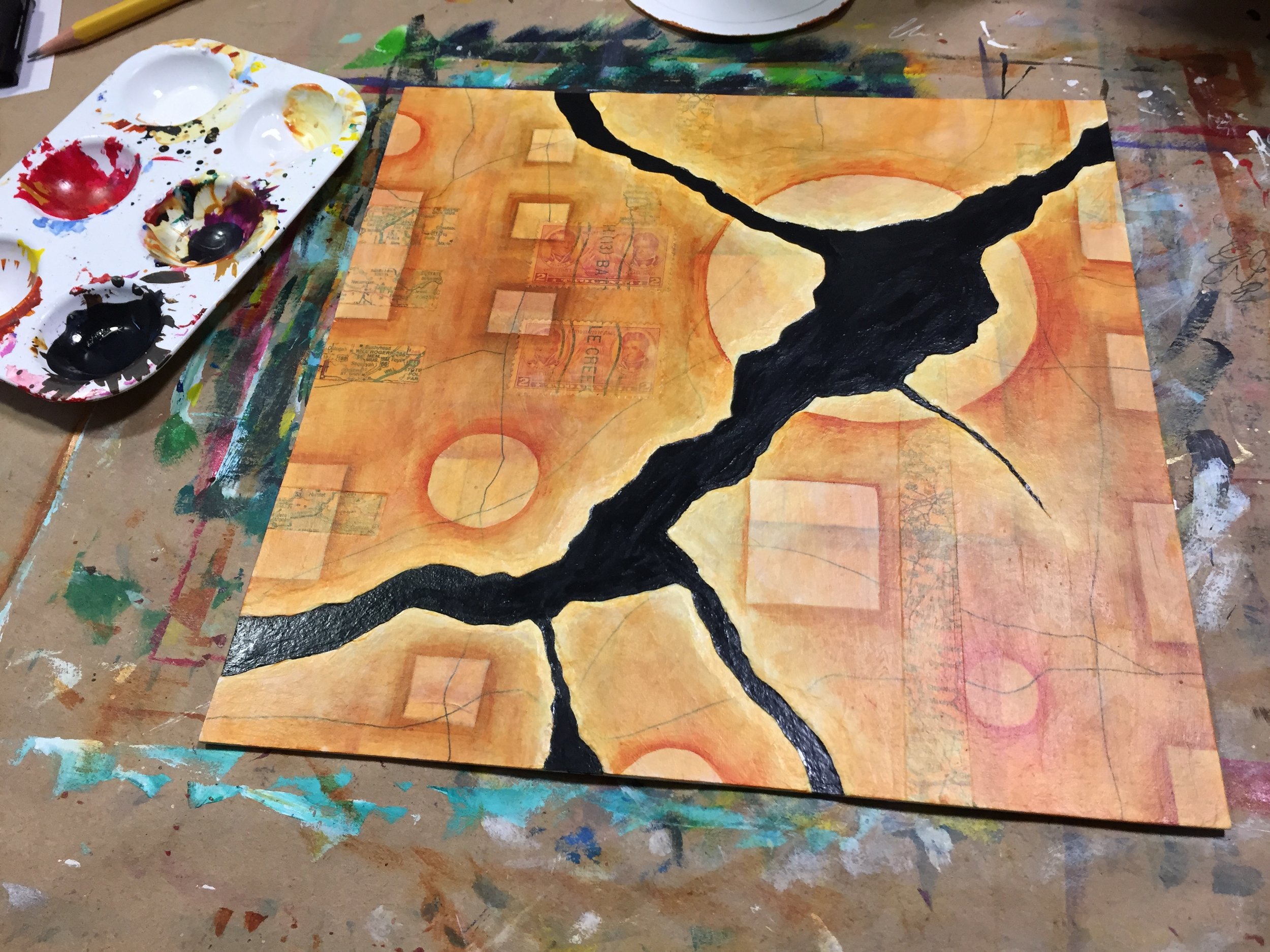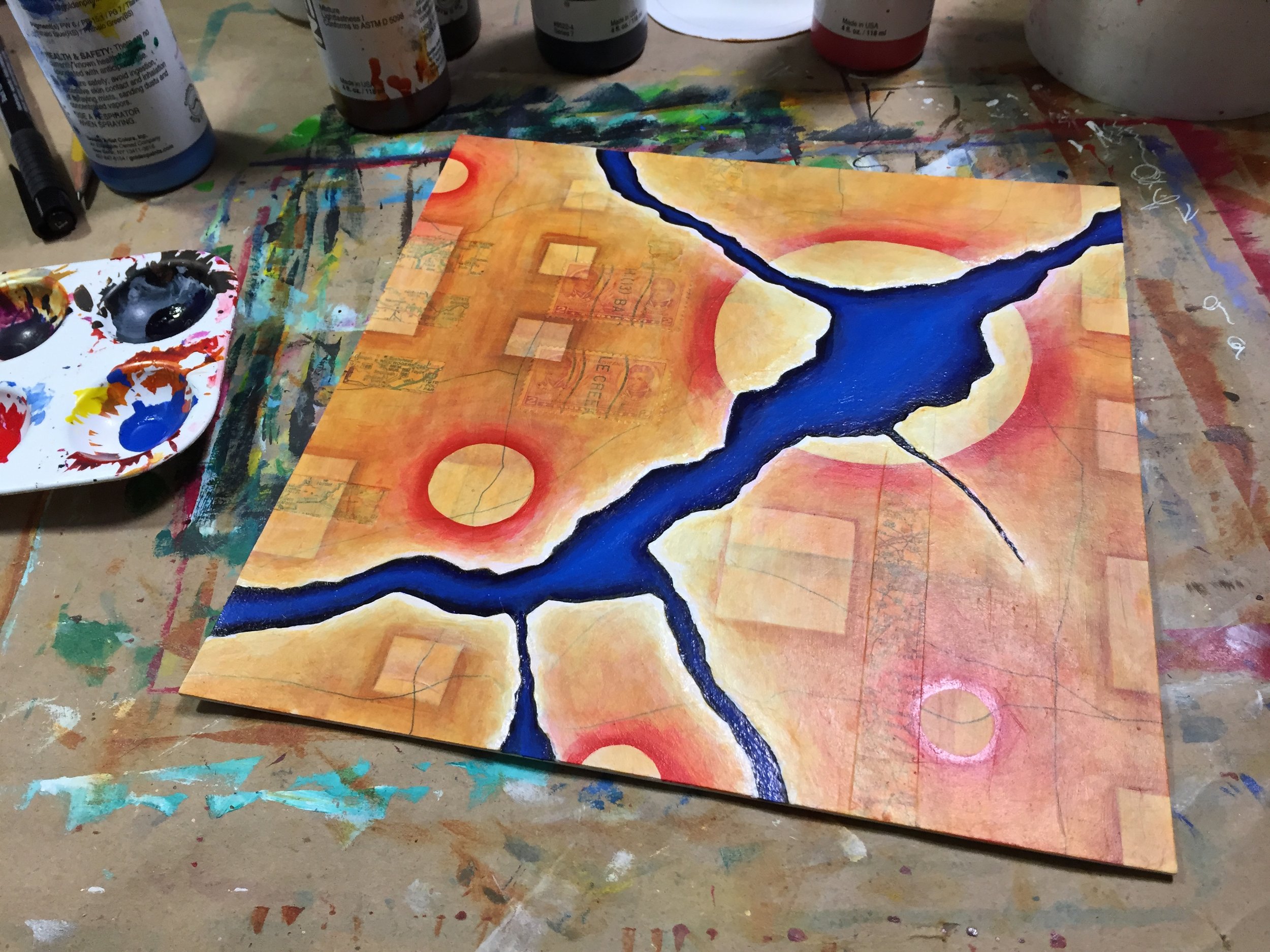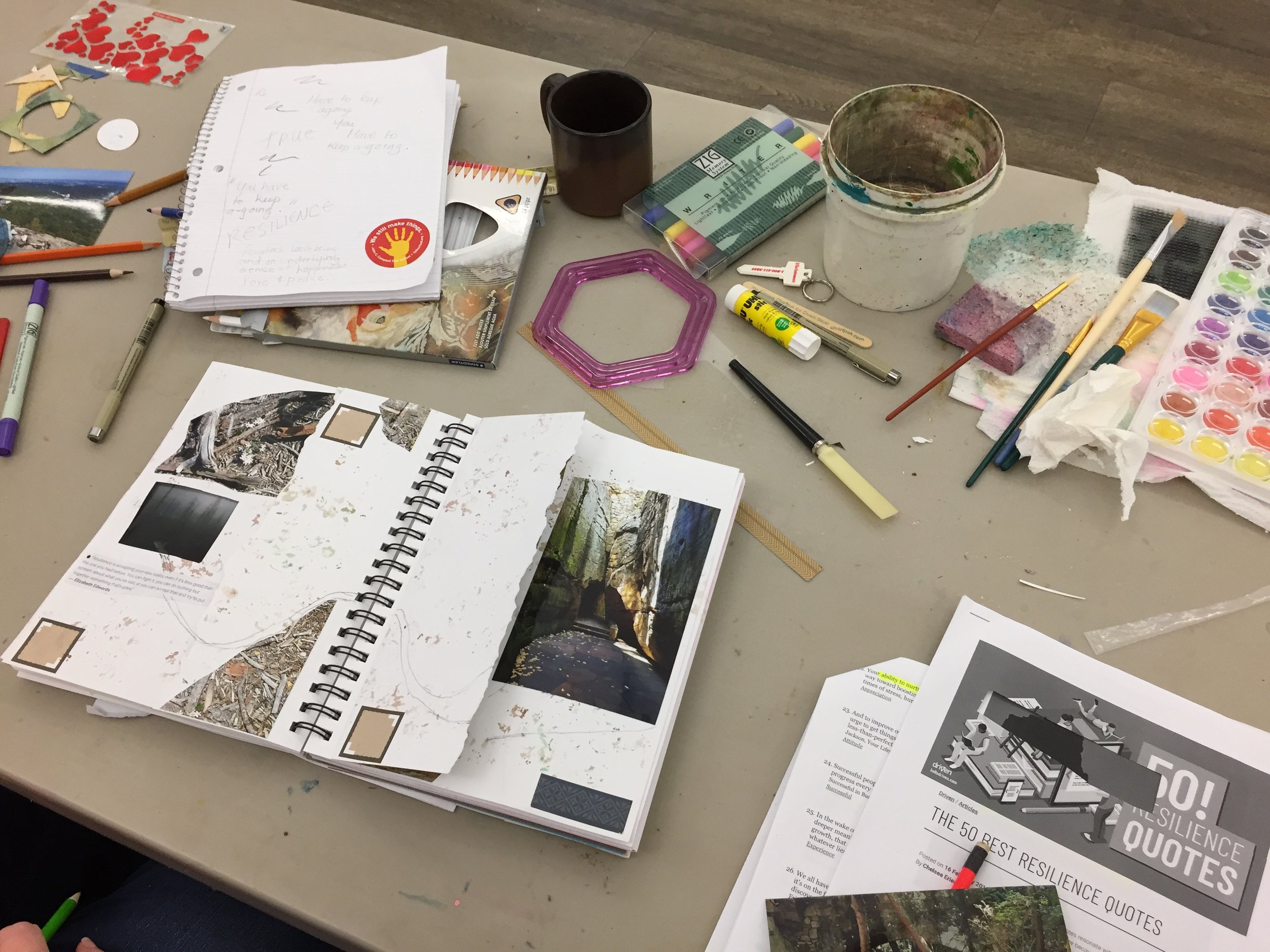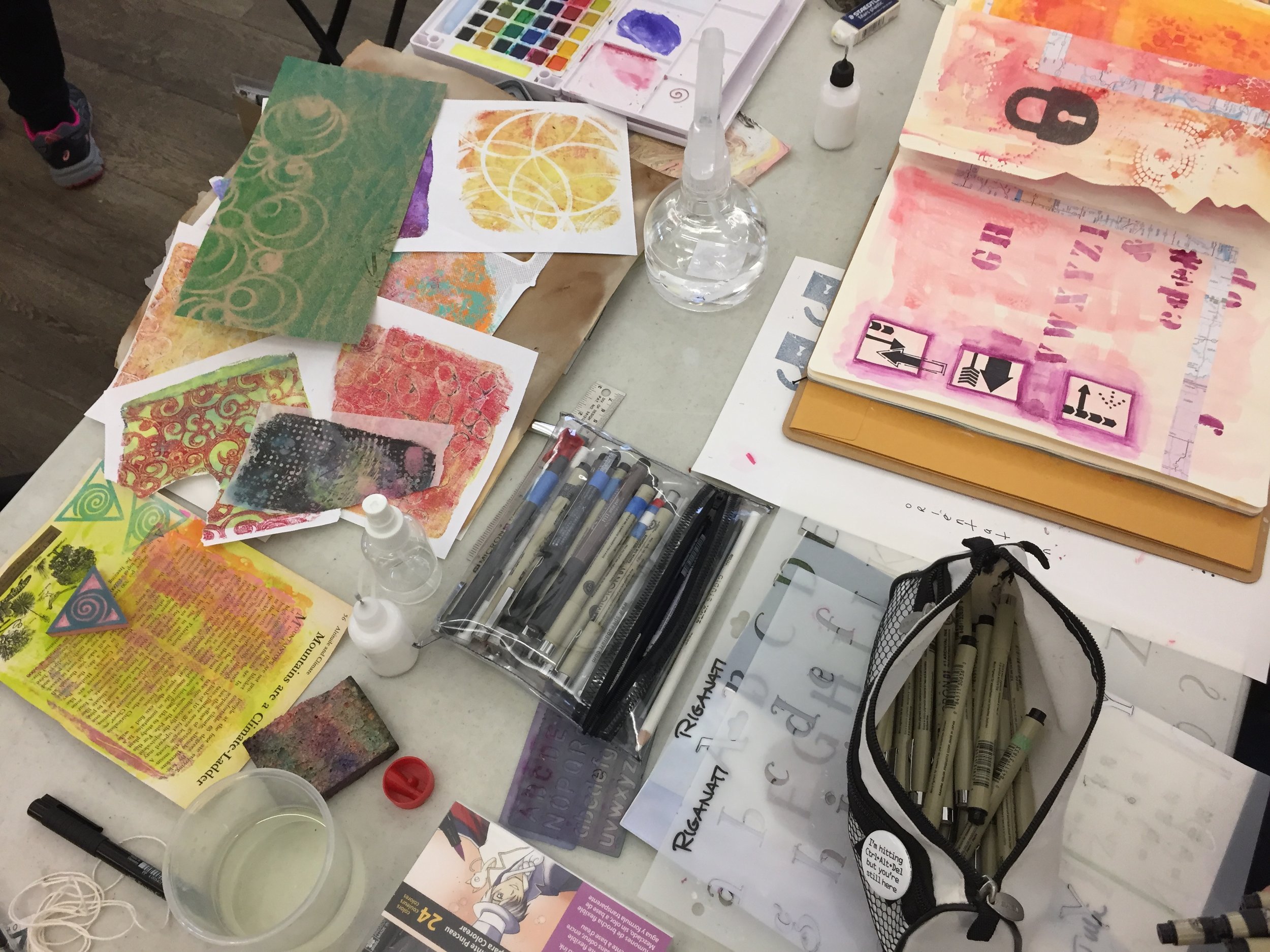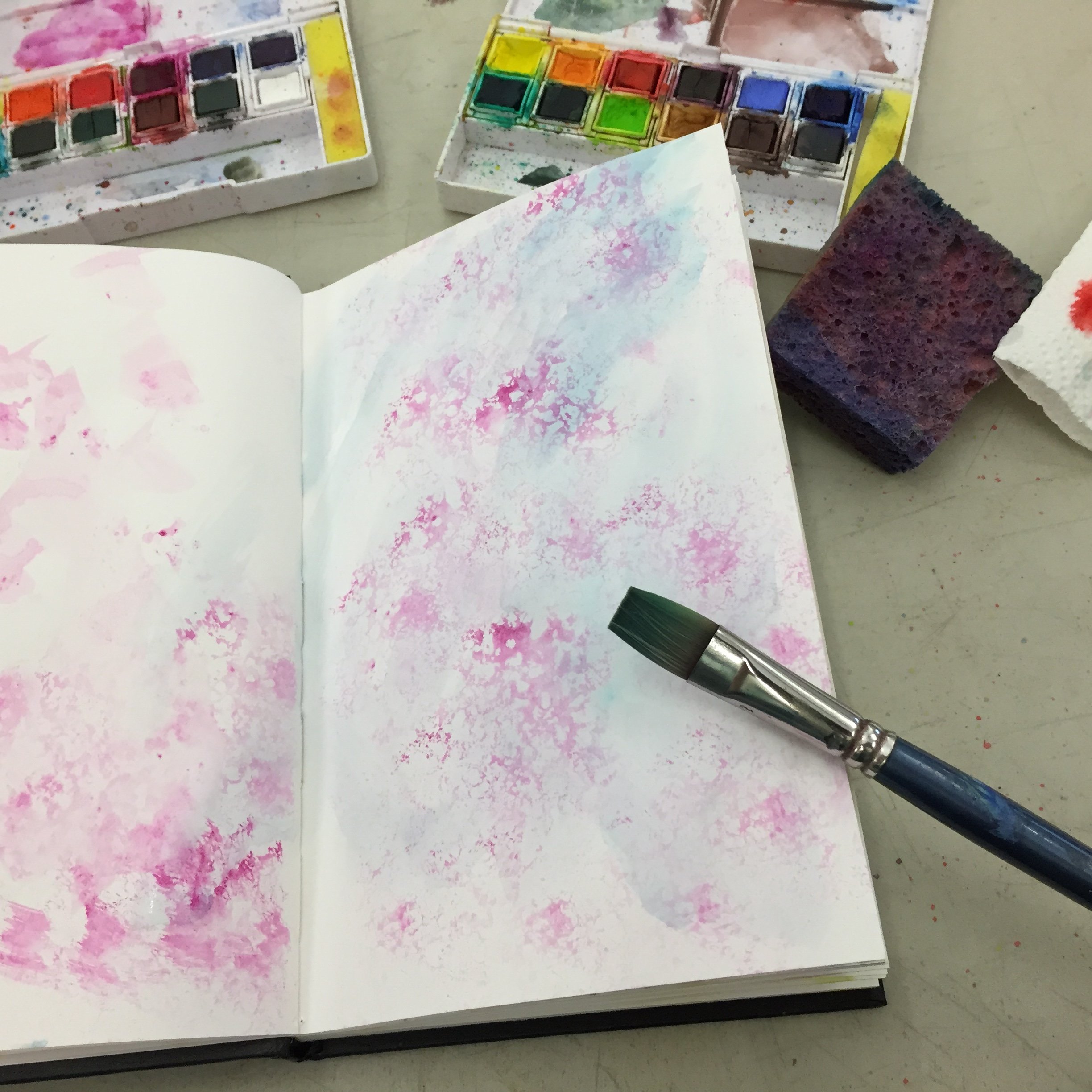In December 2010, I sat down and wrote the first iteration of my rules for creating. Initially inspired by a Patti Digh rant (which she included in her book Creativity is a Verb), I had begun thinking about what gets in the way of my making art. I also drew inspiration from Sister Corita Kent and Chuck Close, and I wrote a set of rules for myself. I was very blunt and honest with myself because that's what I needed then, and I find that often need that type of advice now. Over the years, I have expanded and tweaked the rules, and all of these years later, these rules still resonate with me. Perhaps they will resonate with you.
Here are my "rules" for making art and being creative. I hope that you find them useful.
Rule #1 - Show Up
Make a space and show up everyday. Get in the studio. Sit down at the dining room table. Clear off the coffee table. Pull out the journal, a small notebook, or the knitting when you have five minutes, when you’re watching TV, and when there’s nothing else to do. Show up at the page, the canvas, the hunk of clay, or the pile of fabric. You must be present to win, so show up.
Rule #2 - Sit Down
Turn off the TV. Stop checking email, your phone, and your messages. Get off of Instagram, Tik Tok, and WhatsApp. Forget about the pile of laundry that seems rather appealing, and forget about the dishes in the sink. Turn off the phone, stop texting, Facebooking, and instant messaging. Sit your butt down or go stand at the easel and start making. Start playing and making. Distractions are only a way of procrastinating, so sit down and start.
Rule #3 - Shut Up
Shut up about ideal conditions and what ifs and maybe whens. Shut up about not having the time and the energy. If it’s a priority, you do it. Plain and simple. Stop giving lip service to how much making and creating is a priority. Actions speak louder. Stop complaining, whining, and being jealous of others. Stop whining about having no creativity or no talent. You are creative and you are talented, so go make art. Stop telling yourself that you are a fraud and no one will like you or your art. Just shut up and get busy making.
Rule #4 - Ignore Everybody
Ignore what other people may think. Ignore what other people may say. A lot of people can’t accept their own creativity, and so they will not accept yours. They may be jealous of your activity. They may even say that you are wonderful and great. Ignore them. Criticism and praise can stall your work. Who cares if anyone else likes it? Stop comparing yourself to others saying how easy they have it, how naturally it comes to them, how great they are. Ignore them. It’s not a competition. They are not you, and besides they struggle just as you do. They have the same doubts and fears. Make for yourself. You are expressing yourself as honestly and truthfully as you can. And sometimes you have to ignore your partner, your kids, and your pets and lock yourself in the studio, the office, or the sewing room. They will understand if they know that this is what you need. Ignore them, but don’t neglect them.
Rule #5 - Get Over Yourself
Stop putting yourself down. Stop saying how you and your work suck. Stop reducing and minimizing yourself. You’re not terrible. Get over it. Stop pitying yourself. If you want to create, stop getting in your own way. And don’t listen to the hype. Others may say how great, how talented, how wonderful, how amazing you are. Maybe you are, but don’t let it inflate your ego. Stay humble, and always look to grow and evolve. You have a unique story to tell, so get over yourself and just tell it.
Rule #6 - Start Where You Are
Stop going on and on about ideal conditions. Conditions will never be ideal. You seem to believe that only when you have the time, the beautiful 1000 square foot studio, the expensive set of Maimeri Blu Watercolors, the new laptop with the ultra fast processor, or the exquisite fountain pen, you’ll be able to make art, write, or create. Even if you had all that, you still need to do the work. It’s not the materials. It’s not the space or the time. It’s the making. Grab what’s at hand and make. Picasso did amazing sculptures using cardboard and paintings on newspaper. Don’t have the exquisite hand-bound, Italian journal with the leather cover, so what. Write or draw on the back of envelopes. Make do with what you have. Make and do. That’s what’s important.
Rule #7 - Work
It’s all about working and putting in the hours. It’s about the process not the product. So work in the journal, doodle, and experiment. Start something with no idea where it will lead. Work will lead to work, and the more you work, the easier it is to get to work the next time. Inertia applies to art. A body in motion tends to stay in motion. A body at rest tends to stay at rest. So get moving and working, and you’ll continue moving and working. Forget about if it’s good or bad. Suspend judgment. The more you work the sooner you’ll get onto something. There’s an estimated 20,000 pieces of Picasso’s art in the world. You might say that’s because he’s a great artist. NO! He’s great because he made 20,000 pieces of art. He worked constantly experimenting and pushing his art. Dan Eldon filled 17 hardbound journals in his short 22 years. He made his life into art. Put in the hours and you will do great things.
Rule #8 - Find Your Tribe
You can do this alone, but then you are alone. It’s hard to grow and evolve without others. Surround yourself with creative collaborators that can encourage and inspire you. Don’t compare yourself to them. Learn from them. Lean on them. Let them lift you up, and do the same for them. Artistic accomplices keep you on track. They challenge you. They support you. They point out areas to work on and ways to grow. A creative journey is best when shared. So, find a teacher, a mentor, a colleague, or a friend and start a creative tribe, but know when to ignore them and get to work.
Rule #9 - Immerse Yourself
Find artists and artwork you admire – past and present, and be inspired by their lives and their art. Find artists that do similar things as you and artists that do things that are totally different. You will learn from both. Look at the choices they have made regarding materials, imagery, and composition. Learn from and be inspired from them. Just don’t use this as an excuse to not make art as you spend hours “researching” or constantly compare yourself. Use what you learn, and make and create.
Rule #10 - Nothing is a Mistake
Everything that you do is a learning experience, so see everything as an experiment. Have fun and play. Stop judging yourself and your art. Stop comparing yourself to other artists. The inner critic is only the voice of someone who criticized you and your work long ago, and it echoes to this day. Ignore it, and create with reckless abandon. Spill your guts. Don’t tear up your work, tear pages out of your journal, or ball up the clay. Don’t throw away your art. Remember that it is about the process. Remember Picasso’s 20,000 works – they’re not all masterpieces. Keep everything as a record of your growth. Learn to let go of perfectionism. As Ken Robinson says, “If you’re not prepared to be wrong, you will never come up with anything original.”
Now go and make something!
